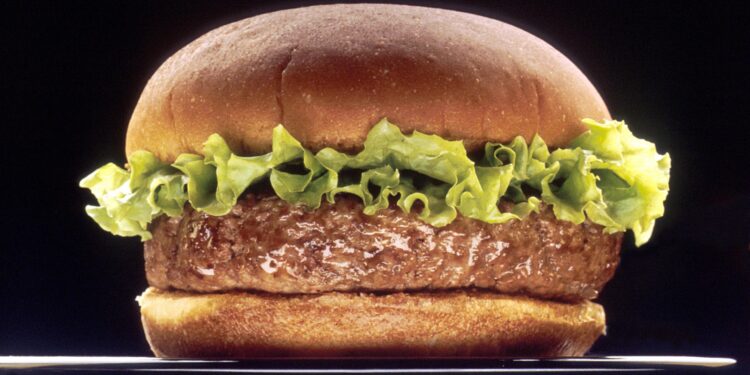In a culinary landscape often dominated by fast food and modern twists, northwest China offers a rare glimpse into the past with a remarkable dish that has stood the test of time: the ancient hamburger. This region, rich in history and culture, is home to what is believed to be one of the world’s oldest hamburgers, a testament to the enduring appeal of this iconic meal. As travelers and food enthusiasts flock to the area, they are not only indulging in a unique flavor experience but also connecting with the deep-rooted traditions that have shaped the local gastronomy. In this article, we will explore the origins, preparation, and significance of this age-old burger, shedding light on why it remains a beloved staple amidst the ever-changing culinary scene.
Exploring the Uniqueness of China’s Ancient Hamburger Delicacy
In the vast landscape of China’s culinary heritage, few delights are as captivating as the ancient hamburger known as Roujiamo. This delectable sandwich, hailing from the Shaanxi province, consists of tender, stewed meat meticulously shredded and nestled inside a freshly baked flatbread. Often referred to as the “Chinese hamburger,” Roujiamo offers a sensory experience that goes beyond mere taste. Its rich flavors stem from a blend of traditional spices and cooking techniques that have been passed down through generations. Here’s what makes this dish remarkable:
- Historical Significance: Dating back over 2,000 years, its origins are deeply intertwined with the culinary traditions of the Qin Dynasty.
- Ingredient Variety: While pork is the most popular filling, variations can include beef or lamb, each offering distinct flavors and textures.
- Street Food Culture: Roujiamo is often enjoyed on the go, reflecting the vibrant street food scene that thrives in Chinese cities.
The preparation of Roujiamo showcases the artistry involved in traditional Chinese cooking. The meat is usually slow-cooked for hours, allowing it to absorb a symphony of flavors from spices like cumin and garlic. The bread, known as mo, is pan-fried until crisp on the outside while remaining soft within, creating a perfect vessel for the meat. Below is a table that highlights some popular variations of this age-old delight:
| Type of Roujiamo | Main Ingredients | Unique Flavor Profile |
|---|---|---|
| Pork Roujiamo | Pork, spices, bread | Savory, slightly sweet |
| Beef Roujiamo | Beef, peppers, herbs | Spicy, aromatic |
| Lamb Roujiamo | Lamb, cumin, garlic | Robust, earthy |
A Culinary Journey Through History in Northwest China
The unique culinary traditions of northwest China offer a fascinating glimpse into the region’s rich history, where flavors and techniques have been passed down through generations. Among its many gastronomic treasures, one standout dish is the Roujiamo, often referred to as the “Chinese hamburger.” Originating from the Shaanxi province over 2,000 years ago, this savory treat features tender, braised meat stuffed into a warm, flatbread bun. The meticulous preparation of Roujiamo typically showcases a blend of spices like star anise and cumin, earning it a diverse array of flavors that resonate through the ages.
Food enthusiasts visiting this part of the world can indulge in freshly made Roujiamo at local street stalls or restaurants, where the experience is as much about the history as it is about the taste. A few highlights of this culinary journey include:
- Chefs’ Heritage: Many street vendors carry on family recipes, providing authenticity.
- Regional Variations: Different provinces have their own unique takes, incorporating local ingredients.
- Accompaniments: Often paired with sides like spicy pickled vegetables, enhancing the flavor profile.
To better appreciate the historical significance of this beloved dish, it’s intriguing to examine how it has evolved. Below is a simple comparison of the traditional and modern versions of Roujiamo:
| Aspect | Traditional Roujiamo | Modern Roujiamo |
|---|---|---|
| Meat Type | Lamb or beef, braised for hours | Varieties include chicken, pork, or vegan options |
| Preparation | Slow-cooked with spices | Often grilled or pan-fried for a crispy finish |
| Serving Style | Street food from traditional vendors | Served in modern eateries, sometimes with gourmet twists |
Savoring Tradition: Where to Find the Oldest Hamburger in the Region
In the heart of northwest China, history and flavor merge to offer a culinary experience like no other. Nestled in the city of Xi’an, food enthusiasts can indulge in what is often considered one of the world’s oldest hamburgers, commonly known as Rou Jia Mo. This unique dish, dating back to the Qin Dynasty, features tender, slow-cooked meat tucked within a freshly baked pita-like bread. The locals take pride in sharing the story of this traditional fare, which reflects the rich tapestry of the region’s culinary heritage. Visitors seeking to savor the authentic taste should head to highly regarded eateries such as:
- Liangpi Restaurant – Famous for its flavorful Rou Jia Mo served with garlic sauce.
- Hao Da Shi Rou Jia Mo – Often praised for its fresh ingredients and traditional preparation methods.
- Jiangji Rou Jia Mo – A hidden gem known for its spicy twist on this classic dish.
With its simple ingredients and deep-rooted history, Rou Jia Mo offers a taste of culture and tradition. As you embark on this gastronomic journey, be sure to accompany your hamburger with local favorites such as cold noodle salads or spiced tea, enhancing the overall experience. Given its historical significance and the reverence with which it is made, trying this iconic dish is not just a meal—it’s a step back in time. The bustling streets of Xi’an become a backdrop for both locals and travelers alike, creating an environment where shared stories of heritage and taste come alive.
In Conclusion
In conclusion, the discovery of one of the world’s oldest hamburgers in northwest China offers a fascinating glimpse into culinary history that transcends borders and time. As food enthusiasts and historians alike congregate to savor this unique dish, it reminds us of the rich tapestry of flavors and traditions that shape our global food culture. This hamburger, steeped in heritage, not only serves as a delectable meal but also as a testament to the enduring nature of gastronomic innovation. For those eager to explore history through taste, this culinary artifact stands as an invitation to experience the past in a deliciously tangible way. As the world continues to embrace diverse gastronomies, the legacy of hamburgers—found in a remote corner of China—proves that some flavors are truly timeless.














